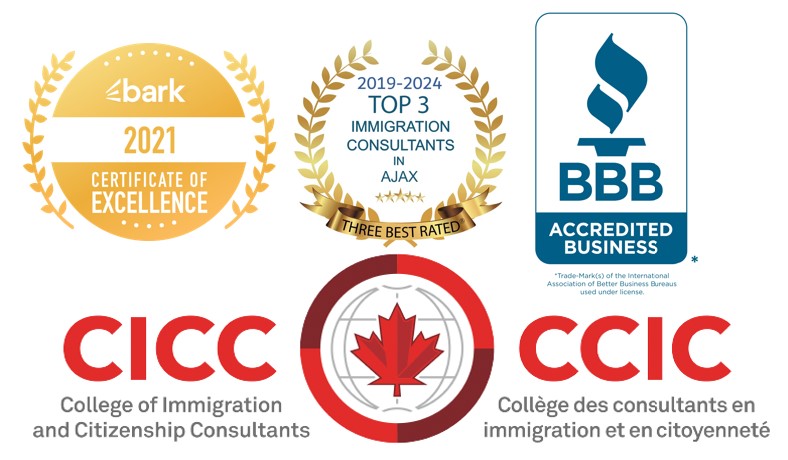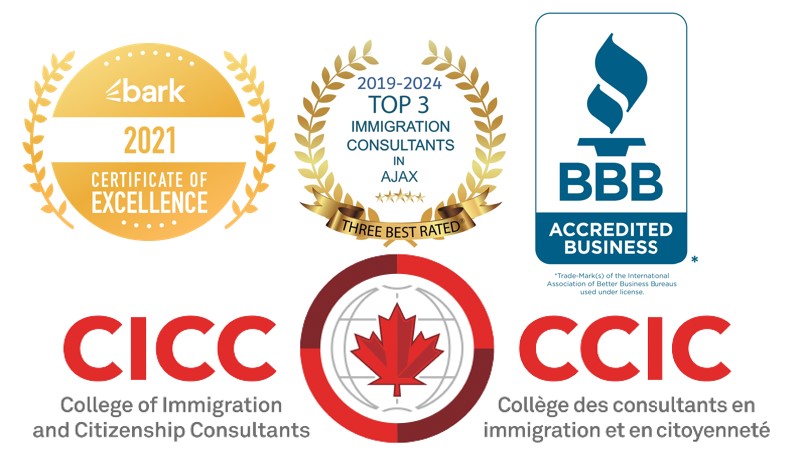From Immigration, Refugees and Citizenship Canada
November 1, 2023—Ottawa—Immigration drives Canada’s economy and fuels its future growth. As we continue to face an aging population and critical labour shortages in key sectors like health care, transportation and home building, newcomers are critical to help spur innovation, grow the economy, and support local businesses and communities.
The Honourable Marc Miller, Minister of Immigration, Refugees and Citizenship, today tabled the 2024-2026 Immigration Levels Plan. This plan is tailored to support economic growth while balancing with the pressures in areas like housing, healthcare and infrastructure. It charts a responsible course for sustainable and stable population growth.
With this Levels Plan, the Government of Canada is maintaining its target of 485,000 permanent residents for 2024 and completing the final step to reach 500,000 in 2025. Starting in 2026, the government will stabilize permanent resident levels at 500,000, allowing time for successful integration, while continuing to augment Canada’s labour market. The government also plans to take action over the next year to recalibrate the number of temporary resident admissions to ensure this aspect of our immigration system also remains sustainable.
The Government of Canada will continue to work closely with the provinces and territories, employers, stakeholders and Indigenous peoples to help Canada adapt to the realities of immigration-driven population growth. This approach is also guided by An Immigration System for Canada’s Future—a report that lays out a pathway to strengthen our immigration system for newcomers, businesses, and communities. Together, these measures will continue to put people at the heart of our immigration policy and ensure that newcomers have the resources they need, including settlement support and access to housing, to succeed in their new lives.
Highlights of the 2024-2026 Immigration Levels Plan include:
- A continued long-term focus on economic growth, with over 60% of permanent resident admissions dedicated to the economic class by 2025.
- A commitment to uphold the Government of Canada’s humanitarian tradition support effort by responding to humanitarian and geopolitical crises around the world.
- New ambitious Francophone immigration targets to support Francophone communities outside of Quebec. The targets represent 6% of total immigration in 2024, 7% in 2025, and 8% in 2026. This is to strengthen Francophone communities outside of Quebec and ensure the economic prosperity of Francophone minority communities across Canada.
The new Levels Plan also considers important progress IRCC has made in the past year through new digital systems and improved client service, which have increased processing capacity and reduced application backlogs.
Through immigration, Canada will continue to help families stay together, bring the skills and talent we need to help companies grow their businesses, and maintain our humanitarian tradition, so that the country continues to benefit from the strength and diversity that newcomers bring to our communities.
Quotes
“Today’s Immigration Levels Plan for 2024-2026, sets out our targets for immigration over the next three years. By stabilizing the number of newcomers, we recognize that housing, infrastructure planning, and sustainable population growth need to be properly taken into account. Through this plan, we are striking the appropriate balance to grow Canada’s economy, while maintaining our humanitarian tradition, supporting Francophone immigration, and developing a more collaborative approach to levels planning with our partners. Canada will continue to welcome newcomers and ensure that they are supported in their new lives.”
– The Honourable Marc Miller, Minister of Immigration, Refugees and Citizenship
Quick facts
- The Levels Plan is a projection of how many permanent residents will be admitted to Canada in a given year and sets targets for overall admissions per immigration category. Under the Immigration and Refugee Protection Act, the Minister must table the Levels Plan in Parliament each year.
- The Levels Plan identifies permanent resident targets in four categories: economic immigration, family reunification, refugees and protected persons, and the humanitarian and compassionate class.
- IRCC is supporting employers through measures like category-based selection. As part of this initiative, IRCC is increasing the number of invitations to individuals with work experience in health care, STEM, transport, agriculture and agri-food, trades and French proficiency. On August 3, 2023, 1,500 invitations were sent to individuals with experience in the skilled trades (including carpenters, contractors, plumbers, etc.).
- Over the last five years, close to 38,000 tradespersons have obtained permanent residency in Canada through the Canadian Experience Class, the Provincial Nominee Program, and the Federal Skilled Trades program.
- Bringing in immigrants to fill labour market gaps will help Canada deliver on its National Housing Strategy, an ambitious 10-year plan that will invest more than $82 billion to give more Canadians a place to call home. Progress on programs and initiatives under this strategy is updated quarterly at www.placetocallhome.ca.
-
Canada continues to be a global leader in refugee resettlement and labour mobility. Last year, Canada resettled more than 46,500 refugees from over 80 countries. In fact, in October 2023, Canada met its commitment to welcome at least 40,000 vulnerable Afghans. Ours is one of the largest Afghan resettlement programs in the world, and our work continues.
- The Levels Plan takes into account extensive engagement with provincial and territorial representatives, as well as public opinion research and consultations with various stakeholders, including businesses, community organizations, and educational institutions.
- The 2024 target of 485,000 new immigrants to Canada amounts to 1.2% of Canada’s current population.
- Canadians across the country can see how newcomers are benefiting local communities through Immigration, Refugees and Citizenship Canada’s Immigration Matters campaign.
-
Under the Canada-Quebec Accord, Quebec establishes its own immigration levels.
Related products
Contacts
Contacts for media only:
Bahoz Dara Aziz
Press Secretary
Minister’s Office
Immigration, Refugees and Citizenship Canada
Bahoz.DaraAziz@cic.gc.ca
Media Relations
Communications Sector
Immigration, Refugees and Citizenship Canada
613-952-1650
media@cic.gc.ca




